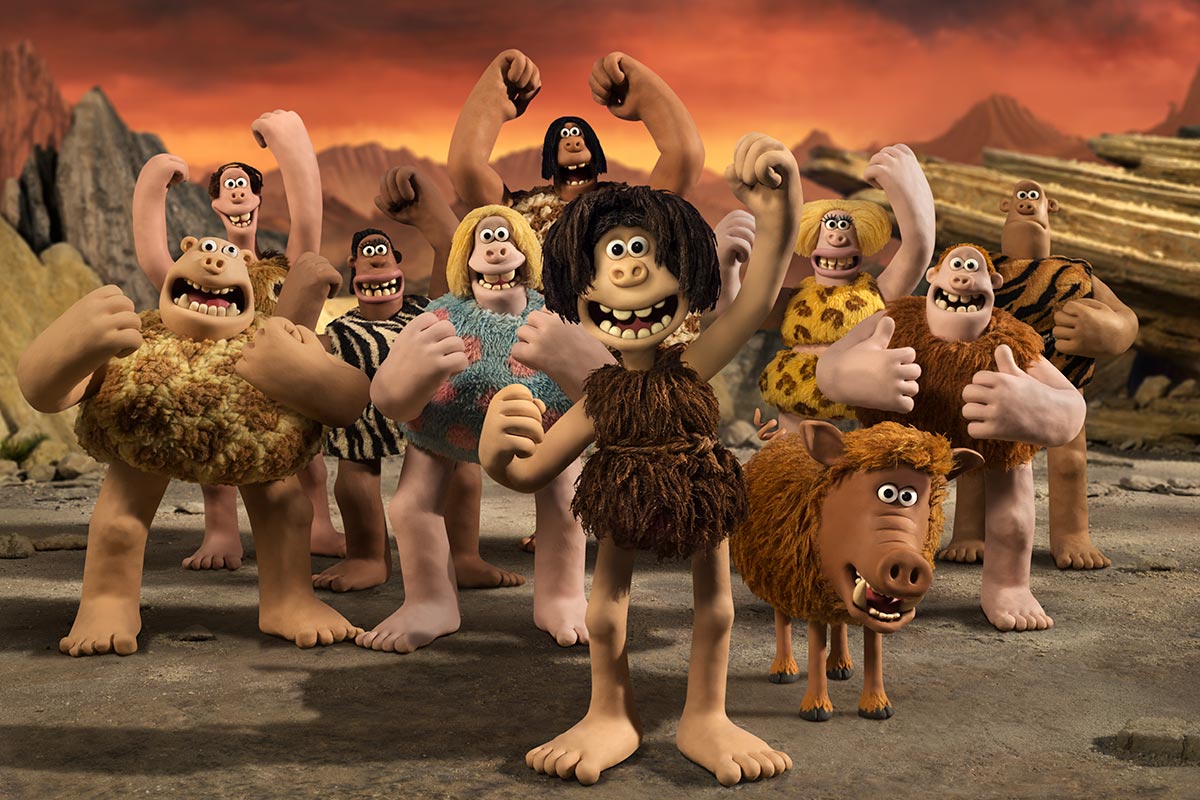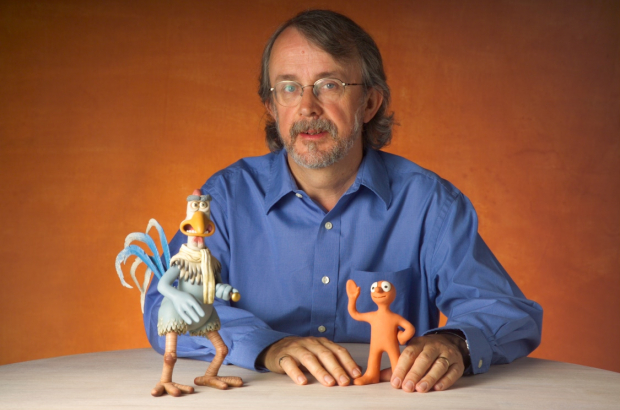- Daily & Weekly newsletters
- Buy & download The Bulletin
- Comment on our articles
'Made by hand and with love': Aardman's Peter Lord on the magic of animation
Peter Lord, cofounder and creative director of Aardman, was in Brussels last week for the Anima Film Festival where he presented their latest film Early Man. Aardman has become synonymous with the best in stop motion with films such as Chicken Run and the Wallace and Gromit series. He spoke with The Bulletin about his influences and how stop motion can coexist with CGI.
Have you attended Anima before?
I've been five or six times over the years. When we started in animation one of the first ever trips we took outside the UK was to Brussels. I don't think Anima itself even existed then - we came to do a workshop and had a good time then and felt great affection for it ever since.
I love to come to festivals, I hope to meet directors of new short films that I’ve not met before. I like to see new films but I’m not very good at it. It’s very difficult at Aardman - and in the UK - to make independent short films. It’s easier to make a feature film than a short film, so I’m not a maker of short films though I’d like to be again.
Why is your company called Aardman?
When I was about 14, living in suburban England, I was very amused by the word aardvark, the South African ant-eating mammal. The word aardvark seemed very funny then - so much so that with my friends we had an informal club and we called ourselves the Aardvaarks. Later I created a super hero that was Aardman, it was no more subtle than taking the aard of aardvark and the man of Superman. I didn’t know that aard meant earth then.
So Aardman was born about 50+ years ago, a long time ago, and when Dave [Osmand, co-creator] and I sold our first film to the BBC, and it was conventional drawn animation of a character that we called Aardman who looked like a super hero. When they asked us who we should make the cheque out to, we landed on the name Aardman Animations. I still find that quite charming - it means nothing. If I see a movie now, I’m sitting in the theatre, and the word Aardman comes up in red on black, it looks powerful and substantial, and it’s just based on a little joke of teenage boys.
What animation influenced you growing up?
A lot of my influences were American. I was growing up in England in the late 1950s and there was a children’s television strand called Watch with Mother, with all that that implies. It was mostly marionettes, occasionally bits of cutout animation, very genteel, very measured, the voice talking to you was like an older woman, your mother or maybe your nanny talking to you - that was the tone.
Then one day, I remember it quite well, I came home and there was the Huckleberry Hound Show on TV with music, song, wisecracks, pace, strange sound effects, and this seemed incredible to me - wow, this is so much better than Watch with Mother. That was Hanna Barbera, so Yogi Bear, Top Cat, the Flintstones, the Jetsons, all those. We strangely didn’t respect Disney for a long time - I enjoyed Jungle Book and the 101 Dalmatians, but overall Disney not so much.

I remember being slightly scared of some of the Warner Brothers stuff because they were quite full-on, there was a certain level of brutality that made an impact on me. The big thing was Ray Harryhausen and Jason and the Argonauts which I saw at the age of about 10 and thought: "That was amazing." That had the same impact then as Star Wars had in its day, that the Matrix had in its day - you were seeing stuff on the screen that you couldn’t believe your eyes that this could be done and I loved that. In Britain we did see European animation as well, occasionally on network TV, so you had a little hint of another world, of other possibilities, but basically it wasn’t until you became a young adult that you started to see things like Trnka, the Czech animator and start to be aware of all the incredible possibilities out there.
What does it take to be a good stop motion artist?
I do feel that it’s very instinctive - it was for me. I started out doing drawn animation and I draw quite well, but I was never trained as an animator as such, and so I found drawn animation laborious and awkward, and the opposite of instinctive. And then when I got my hands on a puppet, a very simple clay puppet, 10 inches high. If your puppet is well made, you can pull the character forward with two hands, and you can twist the hips and the shoulders at the same time, even start to raise an arm - you have control, it feels like an extension of yourself.
When I look at Ray Harryhausen I am in awe of what he achieved working blind, because he couldn’t see what he was doing while he was doing it, he would only see the results when they came back from the laboratories the next morning. What he achieved was miraculous. Nowadays a puppet animator can refine his work, check on the screen to make sure that your accelerations are smooth and your arcs of movement are smooth.
And like any animator you need to be a performer - it is a performance, people often don’t talk about it in those terms, they talk about it as if it’s a craft exercise, which it sort of is since it’s handmade, but it’s craft absolutely combined with performance.
Is CGI the death of Stop Motion?
It’s not the death of stop motion, I’m happy to say. At the moment the two worlds, stop motion animation and CGI animation, live rather happily together. Like in this latest film Early Man, there are substantial crowd scenes, so in the foreground you’ve got puppets performing, and in the background 5,000 computer-generated extras and you’ve also got skies, erupting volcanoes. So in that sense I regard them as best buddies. CGI allows us to open up our world.
I’m a big fan of stop motion because it’s what we’ve always done, we do it very well. We’ve got a great team who are very good at it. If the audience doesn’t want it then we’ll stop doing it - it only works as long as the audience cares. Of course the story is the most important thing - storytelling and the characters you tell it with and the filmmaking are way more important than animation. Animation is just a fabulous trick by which you make films, so you’ve got to get the fundamentals right first. Philosophically it’s important to me that the audience are enjoying something that is made by hand and with love.
Shaun the Sheep started as short TV pieces but then became an 80-minute film. Did you realise how daunting it would be to make a feature film with no dialogue?
We knew we were asking for trouble. Shaun’s had an interesting career - he started as a charismatic but small part in Wallace & Gromit’s A Close Shave and he was probably on the screen for seven or eight minutes. Then, 10 years later somebody said: "I wonder if we could turn it into a TV series?" Having established a world where animals are much smarter than people and people are mostly oblivious to what animals are doing. It is in effect a non-verbal world. So there’s bleating and baaing and barking and neighing, and mumbling from humans but no words and to tell a story for 80 minutes without words is really difficult. Actually about 98% of it was easy and 2% was unimaginably difficult. There were a couple of narrative points where we would have given a spare limb for a line of dialogue explaining what they were thinking. Because that’s what we had to do, explain what Shaun was thinking without using words.
Early Man has the Bronze Age colliding with the Stone Age. How does that work?
So the film people will see is set in prehistory and to me the important part is a simple story, an underdog story I suppose, one culture frankly being dominated by another, one people being driven into exile by a stronger force, and then the underdogs coming back and fighting for their homeland.

The fact that they fight for their homeland through the medium of football may surprise some people, though I do stress that it’s not a football film - it’s a caveman film which has football in it. Nick Park, the director, has no interest at all in football, and no interest at all in history, let alone prehistory. Teachers will find it a bad example for the young - it’s absurd. Nick is a lover of comedy and what he saw was a funny situation, a bloke in a bear skin, holding a club and not knowing what fire is or what a wheel is.
That was the situation Nick wanted to play with, he just knew he would have fun in that world. He came up with the amusing notion that brutish early cavemen would be civilised by football, instead of hitting each other with clubs they would settle their differences with a game of football. But if our hero invented football who would he find to play against? Answering that plot problem led to the clash of cultures you’ll see in the film.



















